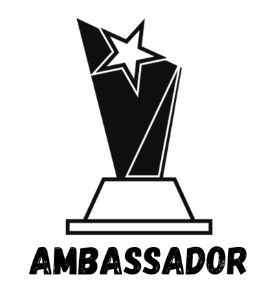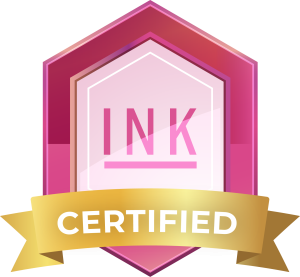Ever since man sat around a fire, and the night got dark and spooky, he’s been sharing stories. Stories to drive the dark away, stories of adventures, or folk tales to keep history alive.
Stories help us make sense of the world around us, and they are easy to remember. Why? Because stories engage emotionally.
Now, fast forward thousands of years, we're still addicted to them.
Think Coke, Budweiser, Google, and Apple. All of these brands use story-based marketing.
Remember one of the Budweiser horse commercials? They’re hard to forget. Just writing about one brought unexpected tears as I recalled the images of the 9/11 Respect commercial.
Remember following the Budweiser team from the stable across the countryside, the bridge, and the unforgettable New York skyline. Then those majestic icons of beauty, strength, and power bow in respect to those whose lives were lost 20 years ago. And then, the only words in the clip…We will never forget.
Today businesses use heartstring stories, social purpose, how they came from starting in their garage, and how they faced the impossible and overcame.
We won’t remember facts, but we don’t forget stories because of the feelings they create.
Stories have become a critical tool for every business. Information we can tell inside a story would be seen as self-promotion if you said it outright. But in a story, people connect with them.
Table of Contents

Back in 2009, two anthropologists tackled a social question. Can a story really impact something’s value? Is it measurable, observable? So they decided to find out.
Rob Walker and John Glenn took $129 and scoured garage sales collecting insignificant objects. They found forgotten, useless items that they bought for less than $1.50.
Then they recruited a group of writers to create stories to go with the items. Once completed, they put the objects on eBay.
On their hunt, they found a globe paperweight covered in layers of dust languishing in a box and bought it for $1.49. That globe sold on eBay, without the dust, for $197.50! Its story resonated with readers, and the price soared.
I’d love to read that story. I imagine tales of tall-masted ships and sailing the globe at the pace of a brisk walk.
The collection gave a total 2700% return on their investment.
Stories have an amazing impact. Why? Because of the emotions that they trigger. We don’t buy logically. Instead, we buy with our emotions, then use logic to back up our decision to purchase.
Imagine what that might look like for your business. What if, instead of a boring product description, you told a story that got the viewer to see what they could do with it?
What if you turned your brand history into a brand story?
Or what if you spoke to our social conscience? Coca-cola creates Coca-cola stories, not stories about Coca-cola. Their product always plays a purposeful role in the story. Without the Coca-cola product, there is no story.
Imagine if you did that for your product and shared your purpose?
Many businesses don’t use stories or don’t share them effectively. However, the right story can help people really engage with your brand. And a story will do far better than a list of benefits, facts, and data.
Let your visitors come behind the scenes and learn how you help them with a well-told story.
Don’t just talk about it, instead let the story reveal itself. It’s more challenging, but it’s also more engaging and effective.
We have to think about what we’re sharing and why. What’s the purpose, and why does your reader care?
Once complete, your stories become the backbone of your marketing strategy. It takes time, planning, and getting good feedback.
Your story can go well beyond words. Images, videos, voices, and music also tap into our emotions.
So as you consider sharing your story, think about what media or platform you want to use to enhance your story. The Budweiser commercial would be nothing without the videos of their horses. Those horses attract a lot of people who don’t even drink beer.
And yes, you can use several formats. Your written story can become any of the other formats or include them.
We have to pick the right story for the situation and the audience.
Before you start writing, you need to know your intended goal or outcome for the story.
Then you need to find the best story format.
With these three components, you can memorably share your message.
You need to know your audience’s concerns, needs, and goals to choose the story.
Then you need to identify the intersection between your audience and how your product or business can help them.
Choosing the right story gives you intention. It helps you define what part of the story to tell and what its core message needs to be.
The best story allows you to share experiences, emotional shifts, observable results, and impact your visitor.
The situation gets more complex because you can tell a story differently and from diverging angles. Determine the approach and find what will be most effective.
The lesson you want to share with your audience will dramatically impact how you present the story to them.
Focus on where the reader’s needs intersect with your product. That gives you a purpose— what you want them to have as a takeaway. This purpose then drives how you present your story. It becomes the goal.
Generally, your goal will guide you to best present your story.
For example, consider how you got started. An origins piece will have a different format than a success story or hero’s journey.
So, my first step is to determine what lesson I want to share.
There are many classical formats for storytelling. We have the hero’s journey, the mountain ascent, in medias ras, and converging ideas. Each works well depending on your goals.
Start with the reason for sharing the story— your purpose/goal. Then reverse engineer to discover the best story format.
Discovering a story to tell is the easy part. Crafting it into the right story for the right audience with the right angle is the crucial and challenging side.
If your plate is already overflowing, your best answer is hiring a specialist.
Find a writer who can help you find and share the right story. Once you find the right person, engage them. You are dealing with your brand and business, invest in them.
Next, communicate with them. The best writers want to dig into your story to get the details that draw in your reader and make you irresistible. So get on the phone with them and share.
In my experience, most questionnaires never get answered entirely. So before I can create, I need to dig and get more details.
Then help your writer find the feeling that will resonate with your target audience. For example, what emotion-based concern do you want to trigger? What need or desire are you tapping?
The right choices will have your story remembered like Coca-cola or Budweiser messages are. Let them make your brand an icon.
 Judith Culp Pearson receives three top honors
Judith Culp Pearson receives three top honors
at the annual Society of Permanent Cosmetic Professionals in
Ft. Worth, Texas - October 7-9, 2023




